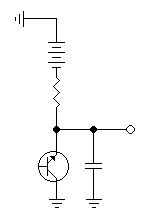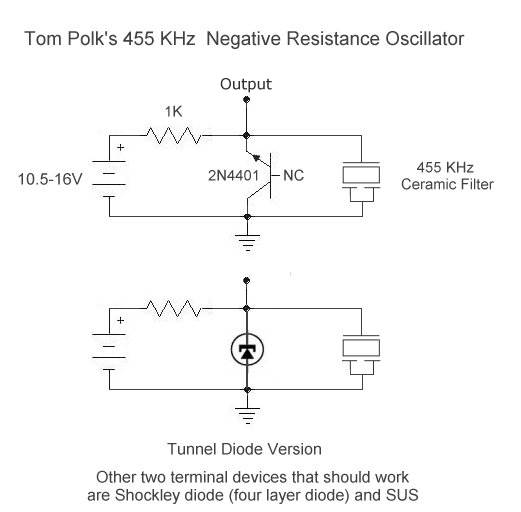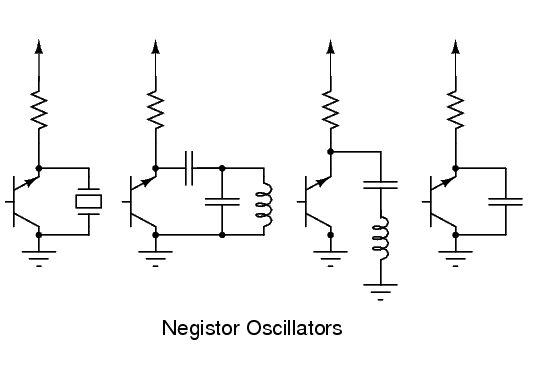BJT
negistor applications
by sv3ora
With just a few components you can create a multi-purpose circuit. This is the
negative resistance oscillator that can be created using a BJT. Notice
the reverse connection of the BJT and also it's base which is left
unconnected. When the voltage reaches a certain value (~7-8v) the
oscillator begins to oscillate. The oscillation frequency depends on
the RC values. Starting values are R=1k and C=100nF and the frequency
is in the audio range. It you want, you can DC-decouple the output with
a 100nF decoupling capacitor. A good choice for the BJT is the 2N2222,
the one in the plastic case. But any transistor will oscillate at some
certain voltage level, so the choice of the transistor type is not
critical. The 2N4124 gave the lowest oscillation voltage, about 6.8v.

If you replace the resistor with
an LDR,
a light intensity sensor can be made. The output of the sensor is
audio. Depended on the audio frequency, light variations can be
monitored and measured. If you replace the resistor with a thermistor a
temperature sensor can be made and again the output of this sensor is
audio. Since the output frequency also depends on the supplied voltage,
this voltage must be stable for accurate measurements and calibration
of the sensors. But this feature can be exploited for monitoring the
voltage of a 12v battery. Depended on the output frequency you know
what the voltage of the battery is.
An interesting feature of this oscillator is that if you connect the
BJT base to either gound or VCC, oscillation stops. There are some
applications that could exploit this, such as data to audio conversion
or beacon applications.
Of course, there are variations of the negistor oscillator. The next
diagrams show some of them. Even RF can be generated easily with these
oscillators and the components count is always kept at minimum.


Back to main
site


